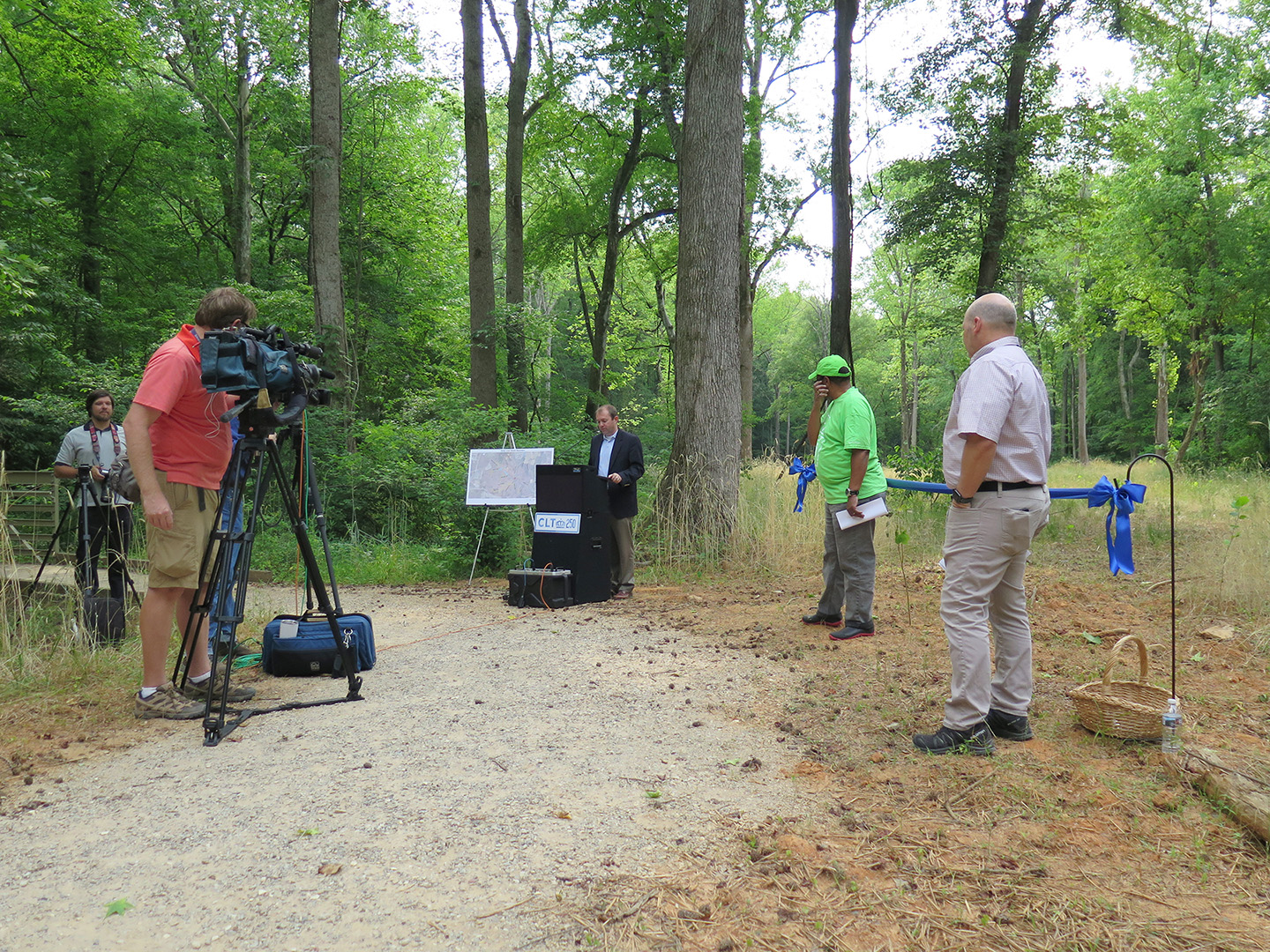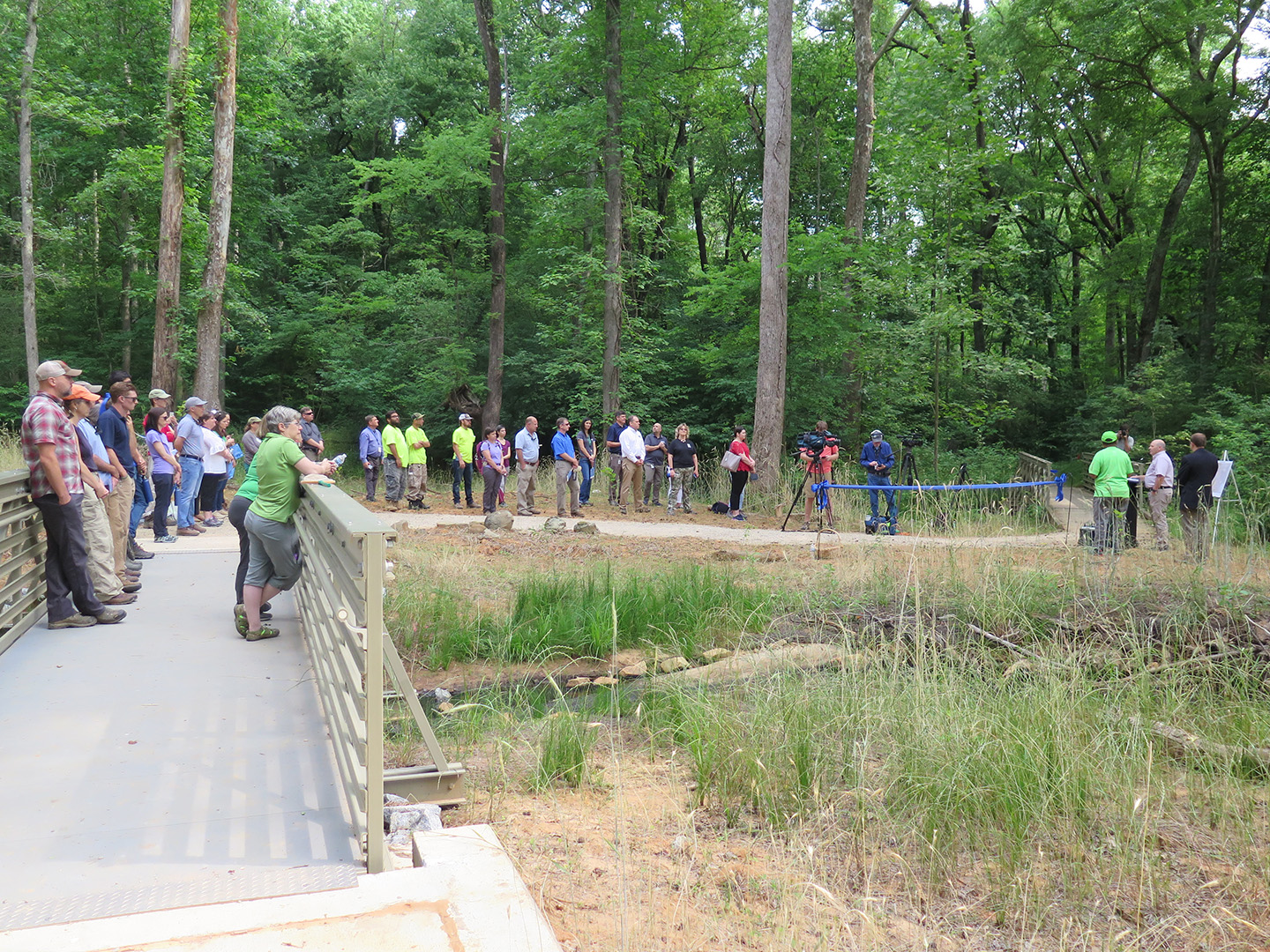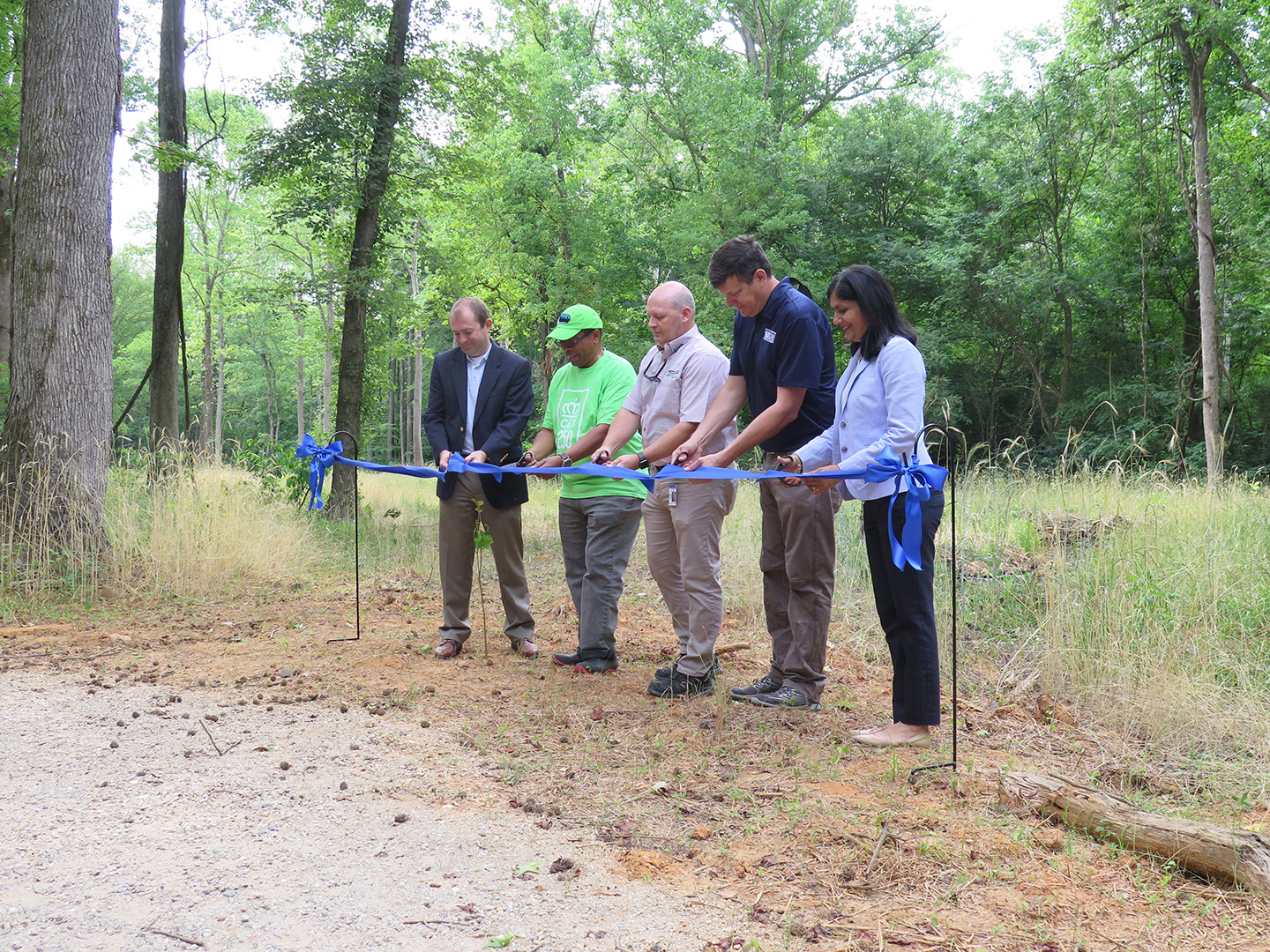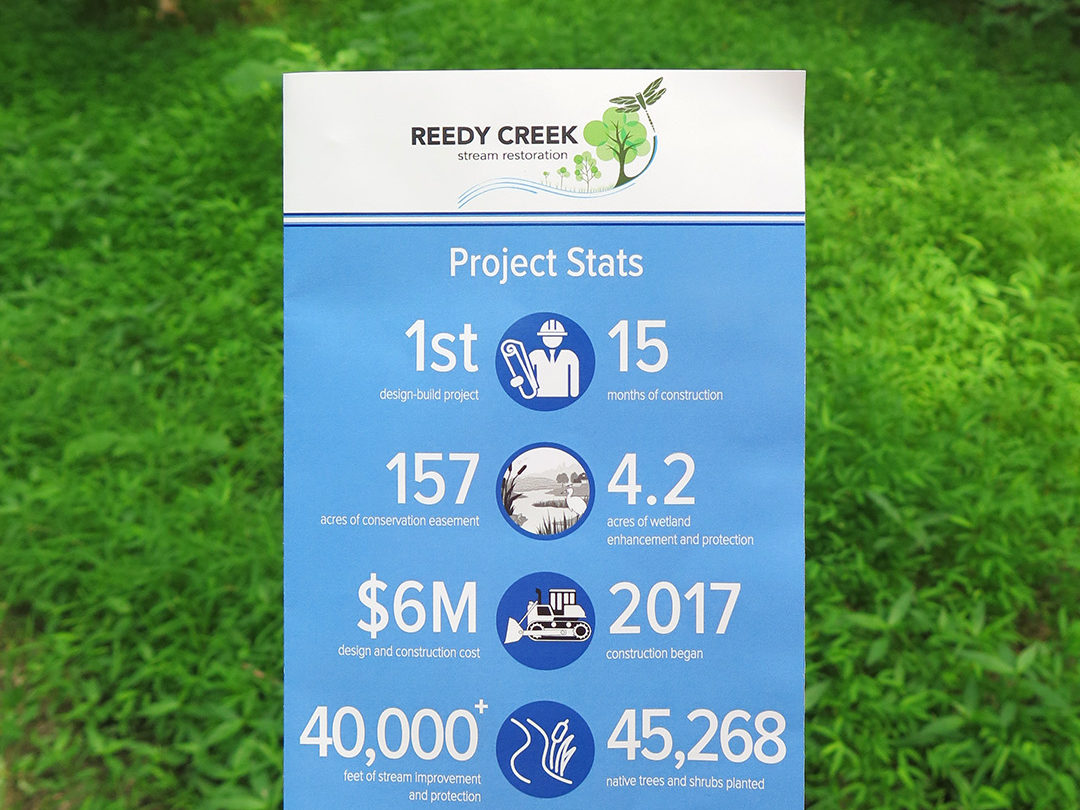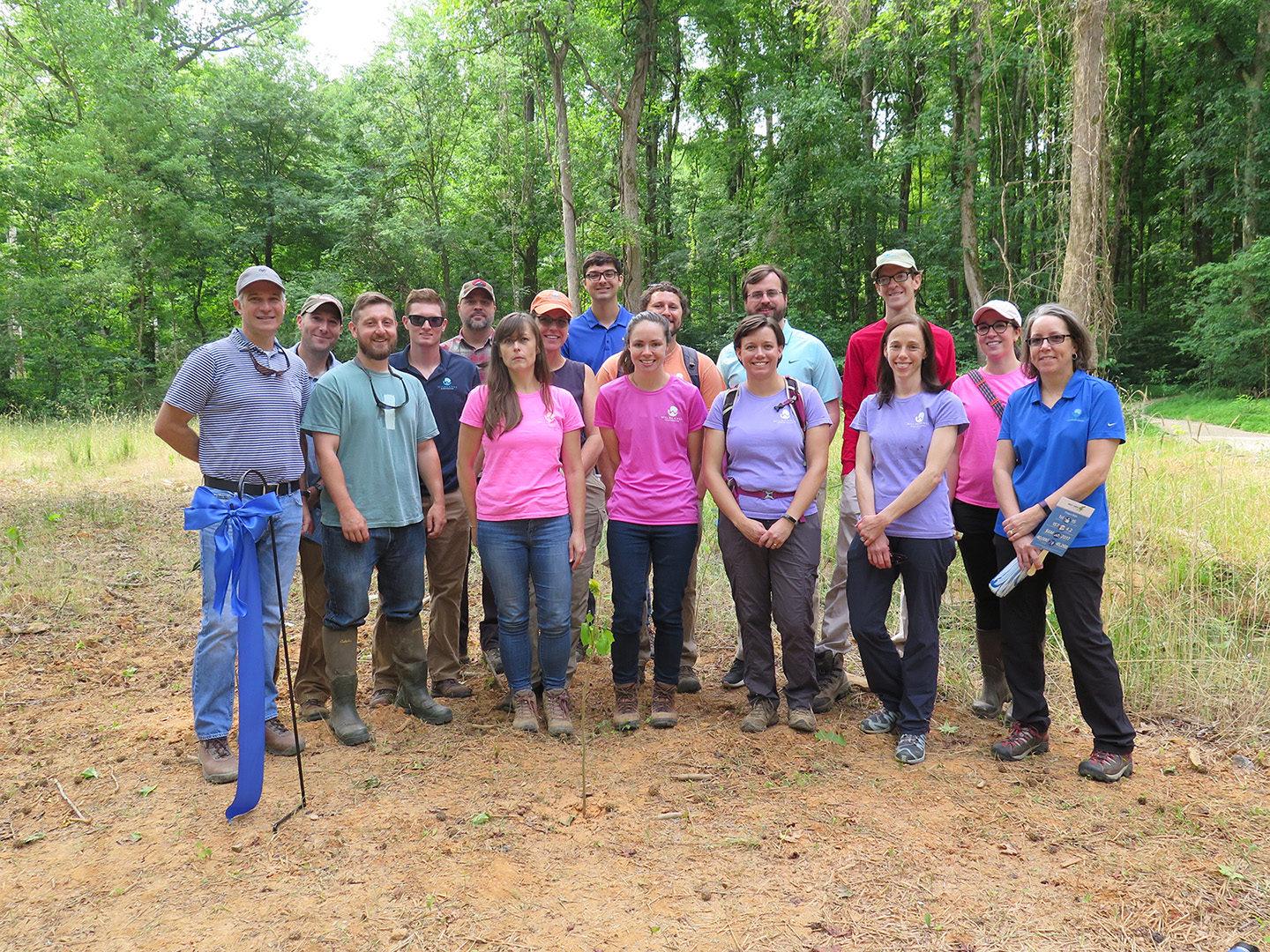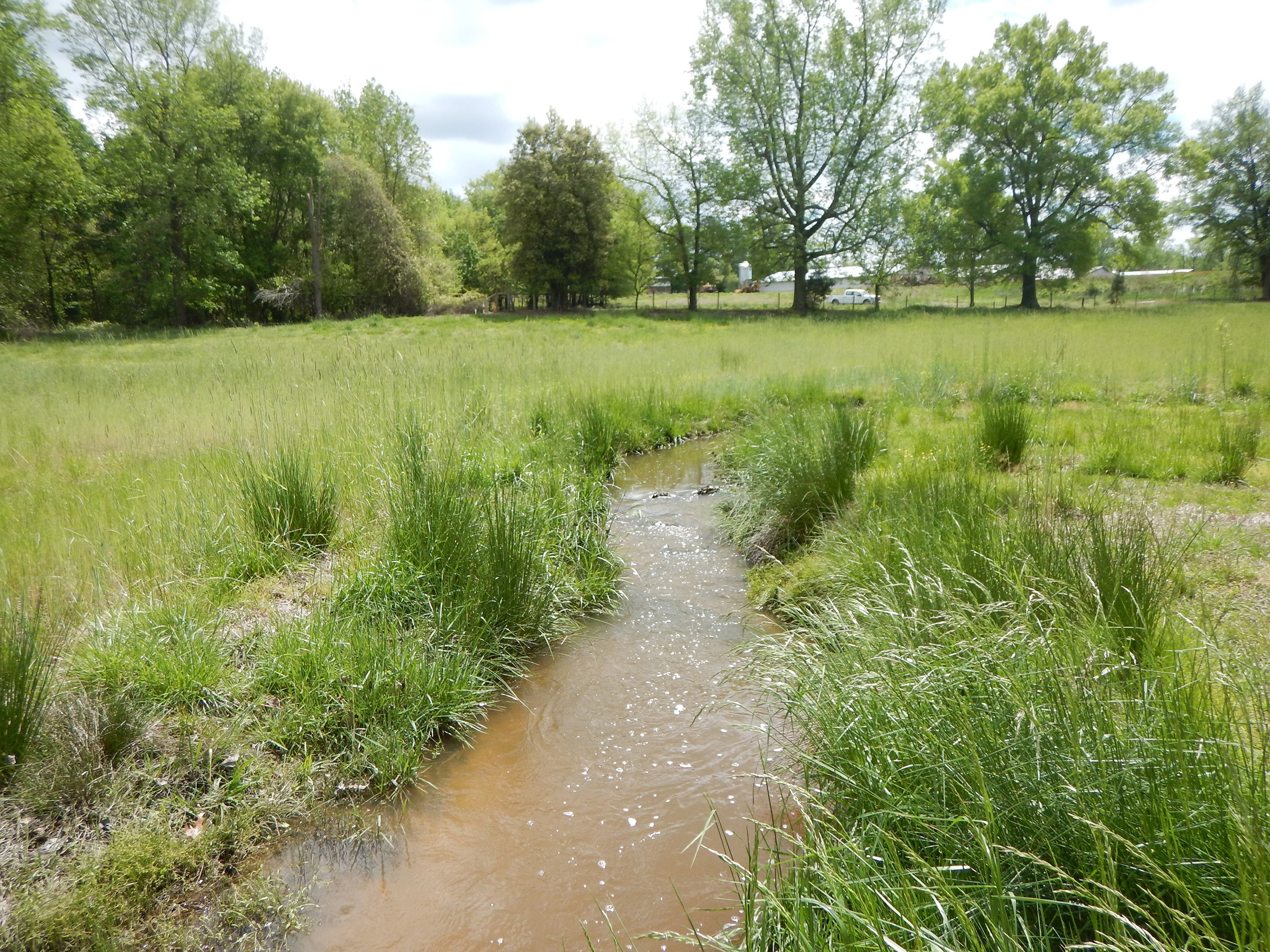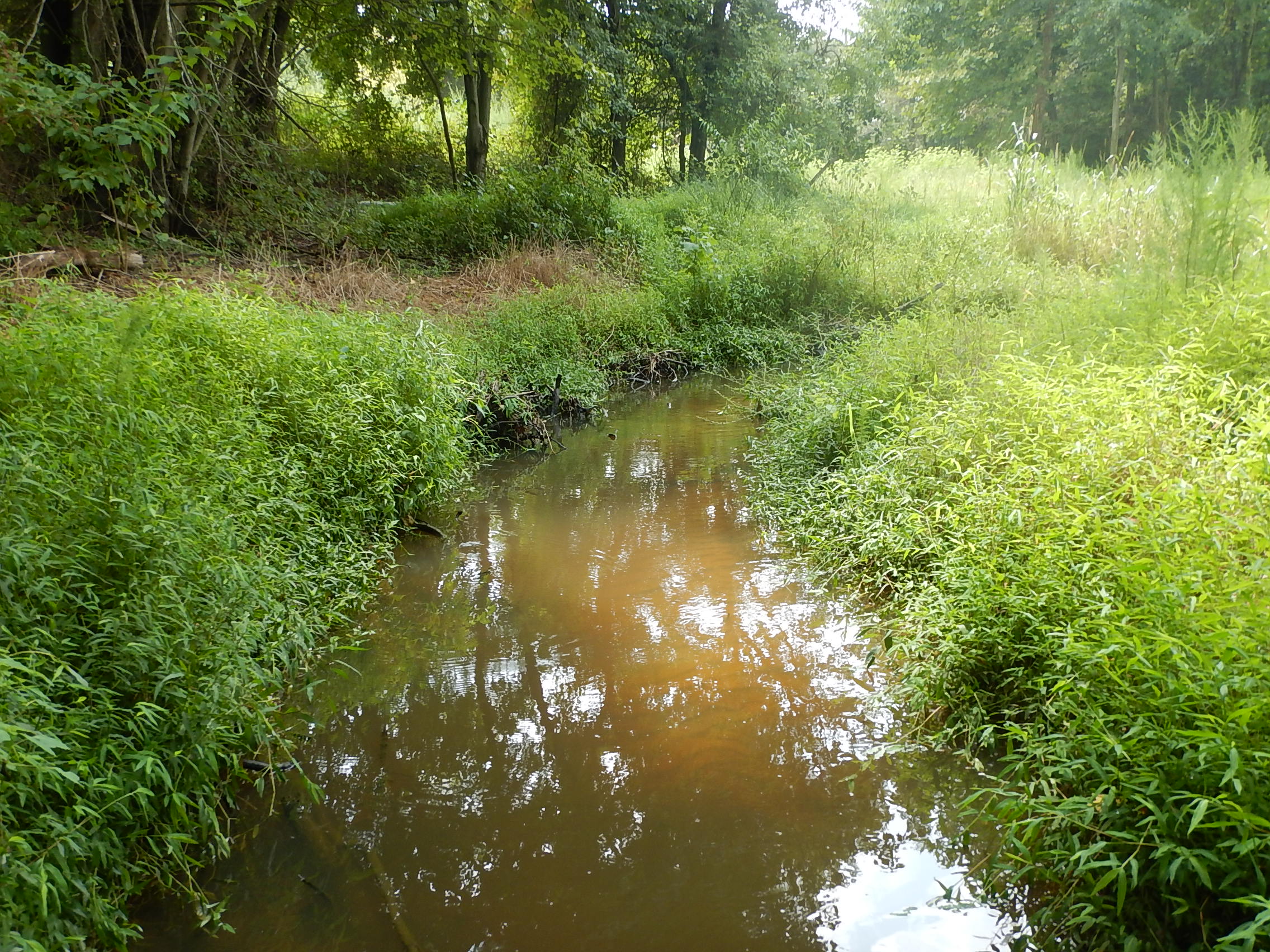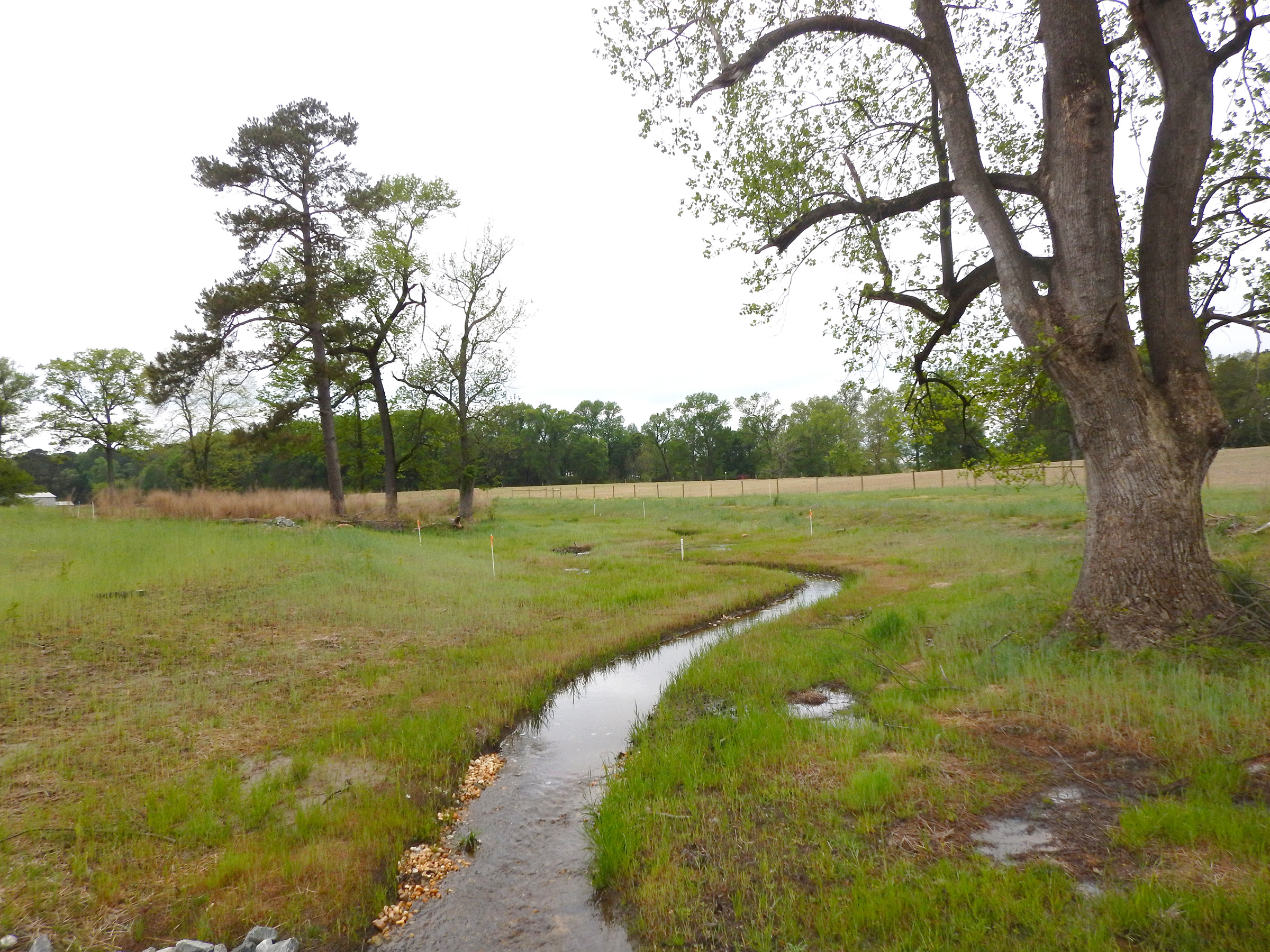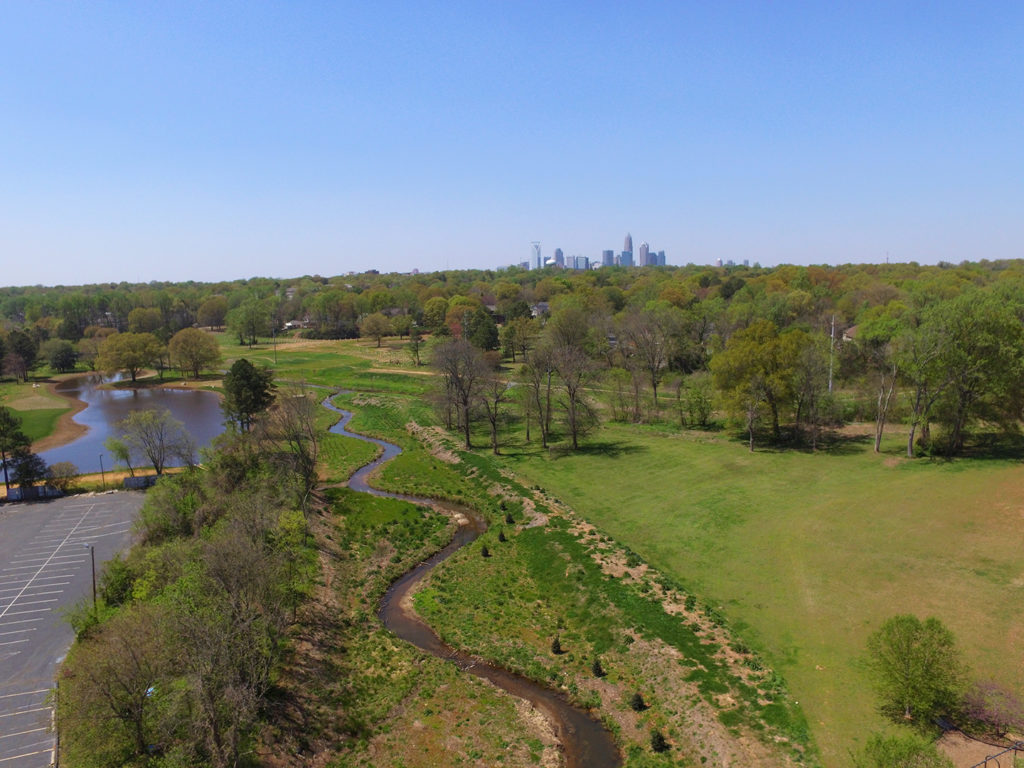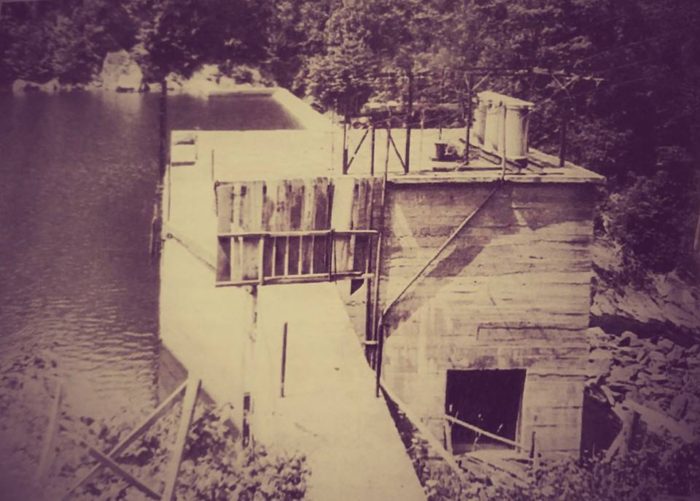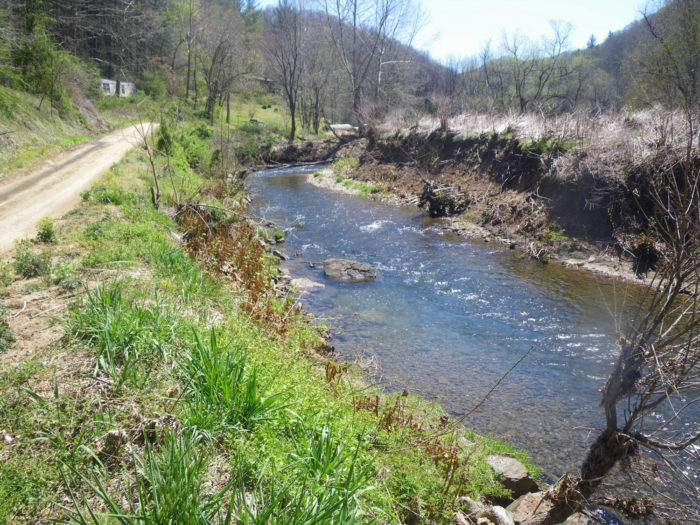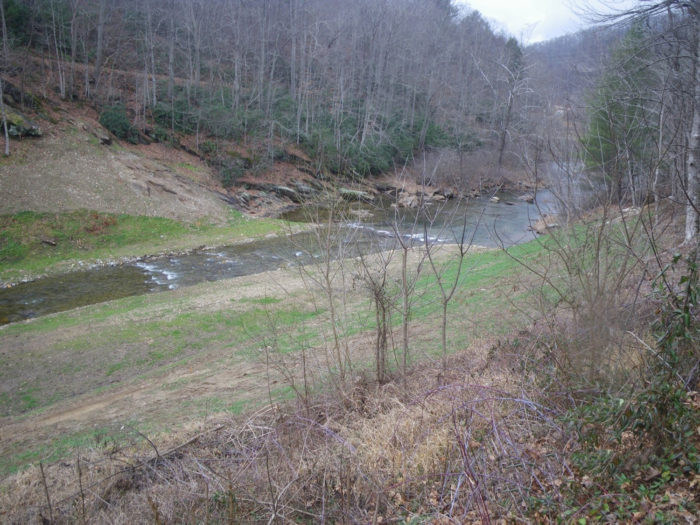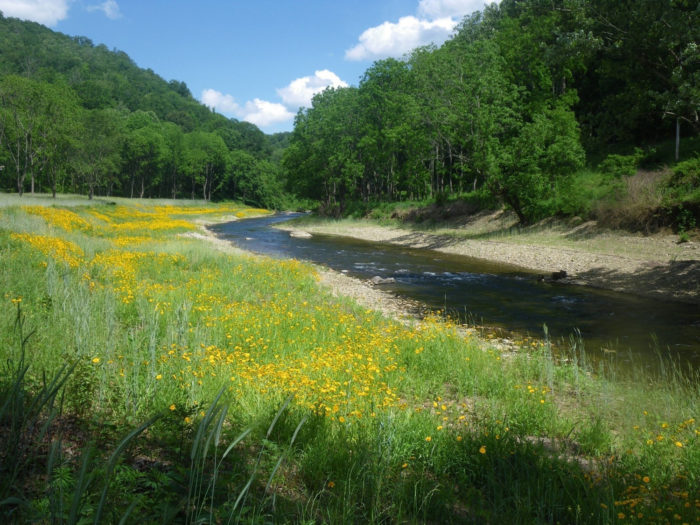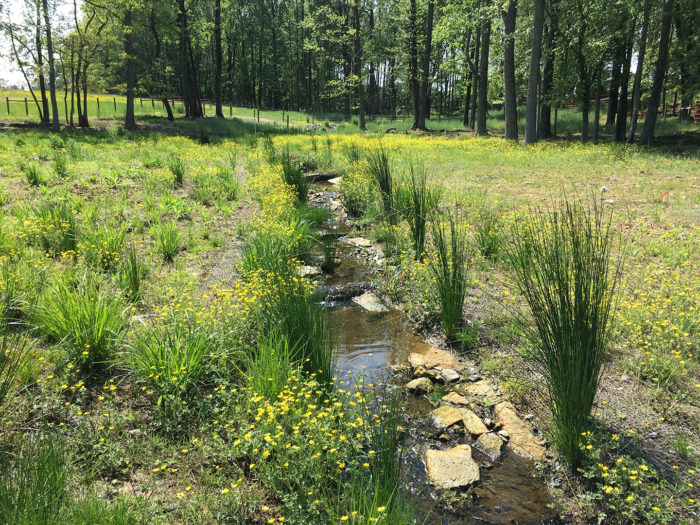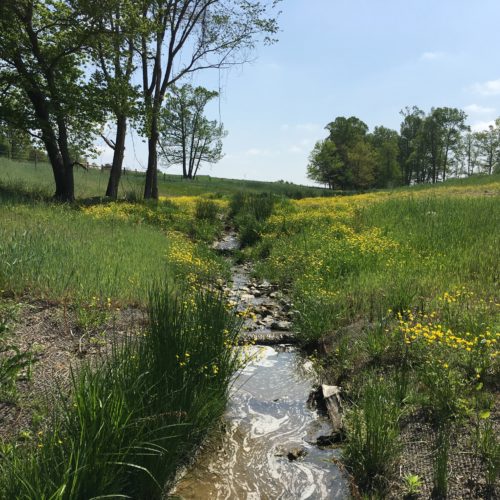Ribbon-cutting ceremony at Reedy Creek Stream Restoration Project was a success
On June 4th, the City of Charlotte hosted an on-site ribbon-cutting ceremony to celebrate the project’s successfully partnerships, environmental improvements, and community benefits. Check out the below slideshow of photos from this event.
About the project: Wildlands was selected to perform this first design-build project to generate stream and wetland mitigation units for the City of Charlotte Umbrella Stream and Wetland Mitigation Bank. This pilot project is located within the environmentally significant Reedy Creek Nature Preserve and involved the restoration of deeply incised, eroded stream channels to appropriately sized bankfull channels with access to a floodplain and preservation of existing high-quality streams and wetlands. The project consists of approximately 26,400 linear feet (LF) of stream restoration and 15,600 LF of stream preservation for a total of 26,000 stream mitigation credits. Approximately 1.0 wetland mitigation unit will be accomplished through enhancement and preservation of wetlands.
CLICK HERE to visit the project website.



